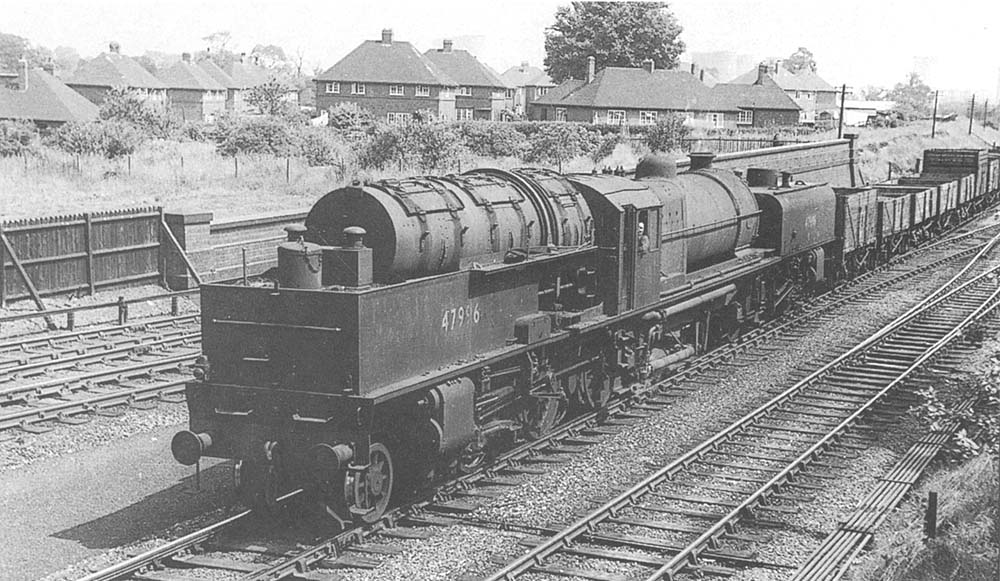 |
|
London North Western
Railway:

Midland
Railway:

Stratford
Midland Junction Railway
|

|
LMS Route: Birmingham New Street to Nuneaton
Water Orton Station: mrwo1043
 |
Ex-LMS Beyer-Garratt 2-6-0+0-6-2 No 47996 leaves the Derby
line with a Birmingham bound freight in July 1955. Built by Beyer Peacock in
December 1930 No 47996 remained in service until June 1956 when it was
withdrawn from 18A Toton shed. The LMS Garratt was a class of Beyer-Garratt
2-6-0+0-6-2 steam locomotive was designed for heavy freight. A total of 33 were
built from 1927, making them the most numerous class of Garratt in Britain. The
Midland Railway's small engine policy led to trains being hauled by two or even
three moderate powerful locomotives coupled together. After Grouping the LMS
continued the Midland Railway's "small engine policy" of hauling trains using
two or three locomotives of moderate power coupled together. This led to most
of the Toton (Nottinghamshire)-Brent (London) coal trains being double-headed
by 0-6-0 locomotives. It was realised that double heading was uneconomical so a
Garratt locomotive was ordered from Beyer, Peacock and Company. However the LMS
Derby design office insisted on the fitting of their standard axle boxes to the
design. These axle boxes were barely adequate for the LMS Class 4F 0-6-0
locomotives, on which they frequently overheated, and were a major weakness on
the LMS Garratts. They were always heavy on coal and maintenance. Three
locomotives were built in April 1927 and the remaining 30 were built in the
period August to November 1930. All were built with straight sided bunkers but
from 1931 all except the first two of the 1927 trio were fitted with revolving
coal bunkers. These were conical in shape and were revolved and oscillated by
means of a small two-cylinder-cylinder steam engine. The revolving bunkers
prevented coal dust from entering the cab and the oscillation facility made
them self-trimming.
The 1927 trio were numbered 4997–4999, and the 1930
batch from 4967 to 4996. They were later renumbered 7967–7999 in the same
order to make way for the new Black 5’s . British Railways added 40000 to
their numbers. The roundhouses at Toton MPD had to have extra length Garratt
roads to accommodate them. Mostly used for heavy coal trains, they later found
other uses as well. Others were allocated to Wellingborough and Hasland near
Chesterfield. Trains for Manchester were generally routed along the Hope Valley
Line and the Garratts normally came off their trains at the Gowhole freight
sidings just south of Chinley. A few would work the Ambergate to Pye Bridge
Line using the north curve at Ambergate, but only as far as Rowsley, where the
train would be split. This was normal for goods trains because of the danger of
couplings breaking on the climb to Peak Forest. In addition, although they had
ample tractive effort to climb the gradient, in the days before goods wagon
trains had continuous brakes there were problems on the way down into Chinley.
On an early attempt, the loco was inspected at Heaton Mersey and it was found
that all of its brake blocks had melted. The class was withdrawn between June
1955 and April 1958. None has survived into preservation.
 back back

|
